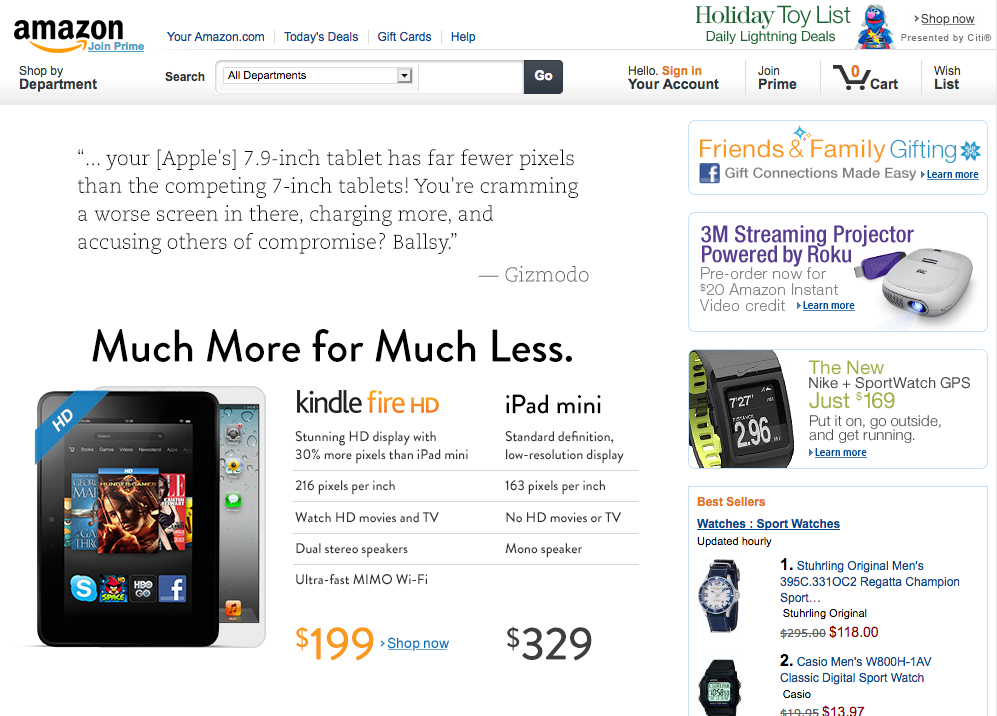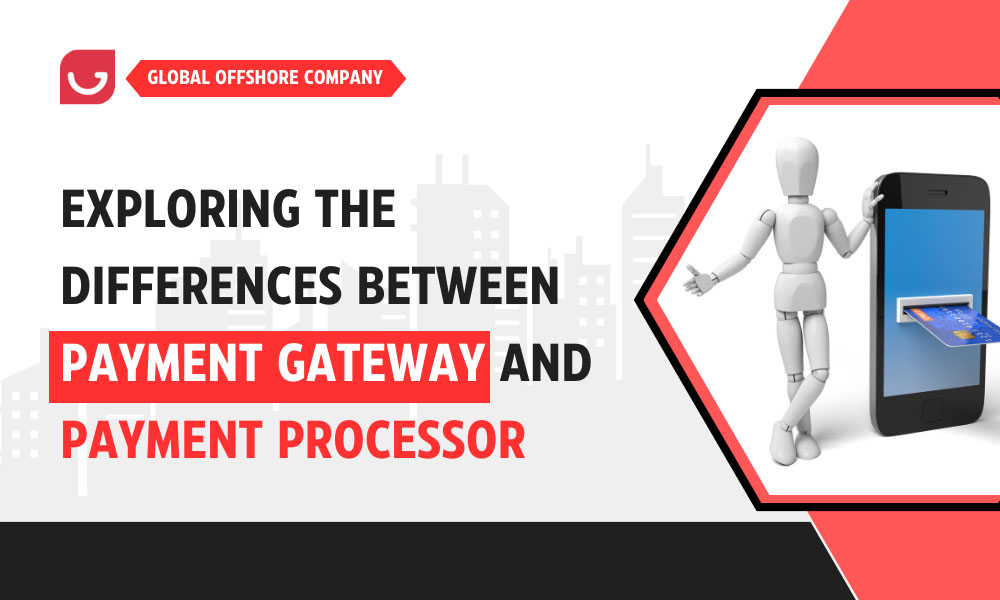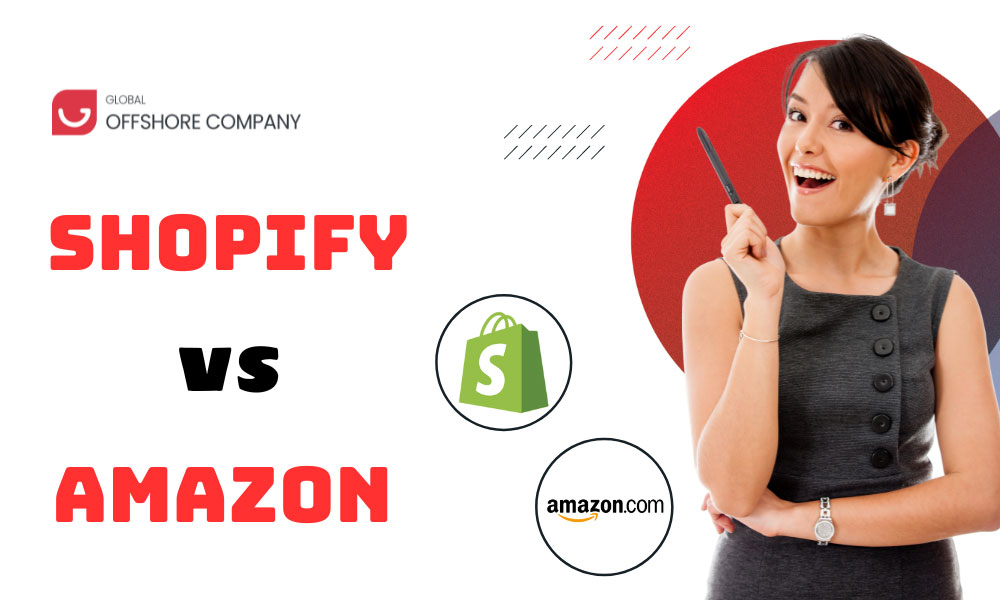The Great E-commerce Debate: Shopify vs. Amazon - Which Is Right for You?
In the ever-evolving world of e-commerce, choosing the right platform to sell your products isn't a straightforward decision anymore. With a myriad of options available, it's easy to feel overwhelmed. Two juggernauts that often steal the spotlight are Shopify and Amazon.
Shopify, a versatile and widely used e-commerce platform boasting more than 4 million online stores, offers businesses a range of tools to build their online presence. On the other hand, Amazon, the behemoth of online marketplaces, welcomed a staggering 2.2 billion visitors in April 2023.
If you're stuck in a dilemma, trying to weigh the pros and cons of **Shopify vs. Amazon**, our comprehensive comparison guide will help you navigate through various aspects, ultimately aiding you in making an informed choice for your business.
Here, we break down the key differences between the two e-commerce giants in terms of:
- Fees
- POS (Point of Sale) and E-commerce Options
- Website Features
- Security
- Customer Service
Let's dive into the details:
| Shopify | Amazon | |
|---|---|---|
| Fees | ❌Shopify fees can add up, particulartly if you heavily rely on third-party apps to enhance your store's functionality. | ❌Amazon's per-item fees for individual plans can be relatively high, and certain product categories come with additional fees. |
| Processing and payout | ✅Shopify typically processes payment within three days, ensuring the quicker access to your funds. | ❌Amazon, on the other hand, pays sellers every two weeks, with an additional waiting period of three to five days for funds to become available. |
| Website features | ✅Shopify offers a variety of free templates, blogging capabilities, and email marketing tools, providing more design flexibility for your online store. | ❌In contrast, Amazon offers almost no design flexibility for product or store pages, and it lacks built-in blogging features. |
| E-commerce features | ✅Shopify provides the flexibility of hosting unlimited products, improved shipping options, and robust inventory management and integration capabilities. | ✅Amazon boasts a massive customer base, and its Fulfillment By Amazon (FBA) service can significantly reduce overhead costs. |
| Security | ✅Shopify is PCI-compliant and offers SSL security, ensuring a secure shopping experience for your customers. | ✅Amazon also adheres to PCI compliance standards and provides SSL security. |
| Integration and Setup | ✅Shopify boasts thousands of apps and offers seamless native integrations, making it easier to connect with various platforms and enhance your store's capabilities. | ✅Amazon integrates with many third-party platforms, allowing for a smooth setup process. |
| Customer Service | ✅Shopify offers 24/7 live customer support to address your queries and concerns. | ❌Amazon's customer service options are more limited. |

Amazon Overview
| Pros | Cons |
|---|---|
| No contracts | Limited product page customization |
| Fulfillment By Amazon takes care of warehousing and shipping products | Fees for each item sold on the Individual plan are high compared to other marketplaces |
| Large customer base | Lots of competition from other sellers |
| Easy to start selling | Fees are highly variable |
| Some category fees are as high as 45% |
Shopify Overview
| Pros | Cons |
|---|---|
| No contracts | Limited number of free templates |
| Exclusive shipping rates and features | Editing templates can be time-consuming |
| Thousands of apps available | Shopify Payments is only available in 23 countries |
| Comes with built-in integrations with other marketplaces | No built-in members areas |
| Accept payments in 132 currencies | No native scheduling or appointment booking |
| Ecommerce stores can be used in 175 countries | Membership fees are higher than some other platforms |
Shopify vs. Amazon: A Comprehensive Cost Analysis
When it comes to the costs associated with running an e-commerce business on either Shopify or Amazon, a detailed comparison is crucial. Let's break down the expenses associated with each platform.
Shopify Costs:
1. Membership Plans: Shopify offers three membership tiers, with monthly fees ranging from $39 (Basic) to $399 (Advanced). The higher-tier plans provide enhanced features, more user accounts, and lower transaction fees.
2. Transaction Fees: Shopify charges transaction fees based on the type of payment:
- Online Credit Card Rates: 2.4%-2.9% + 30¢ per transaction.
- In-person Credit/Debit Card Rates: 2.4%-2.7% + 0¢ per transaction.
Notably, these fees are reduced for higher-tier plans, and Shopify Payments is included in the membership price. However, if you opt for other payment methods, additional transaction fees may apply.
3. Foreign Currency Exchange Fees: If you're considering accepting multiple currencies to expand your reach, Shopify imposes foreign exchange fees. In the U.S., this fee is 1.5%, while it's 2% for all other countries.
4. Other Fees: Depending on your specific needs, you may encounter additional costs. These can include subscription fees for certain apps integrated into your store, some of which charge on a subscription basis, while others have one-time fees.
Amazon Costs:
Amazon's cost structure is somewhat different:
1. Membership Plans: Amazon offers two main plans—Individual and Professional. The Individual Plan charges $0.99 per item sold plus additional fees. On the other hand, the Professional Plan costs $39.99 per month. However, the variability in Amazon's fee structure makes it challenging to predict precise monthly expenses.
2. Transaction Fees: Amazon's fees can be intricate, with various factors impacting costs. The basic Individual Plan charges 99¢ per item sold. Professional Plan sellers face category referral fees, ranging from a flat fee of $0.30 per item to percentages up to 45%, contingent on the product category.
3. Other Fees: Amazon includes a range of other fees, including storage fees for inventory in Amazon's warehouses. Additionally, there are costs associated with high volumes of items that haven't sold in 12 months or more. For those utilizing Fulfillment By Amazon services, costs can vary, and Amazon provides a calculator for estimating expenses.
4.Processing and Payouts:
Shopify:
When utilizing Shopify Payments or any integrated payment processor, your customers benefit from swift and secure checkout experiences. Shop Pay, a customer-centric feature, enables account creation for faster checkouts, potentially boosting conversion rates.
Payouts from transactions processed through Shopify Payments are typically accessible within three business days, ensuring timely access to your funds.
Amazon:
Amazon adopts a different approach to payouts. Sellers on Amazon receive payments every two weeks. After Amazon initiates the payment, it may take an additional three to five days for the funds to reach your bank account. However, for those within Amazon's network, Express Payouts offer expedited access to funds.
5. Chargebacks and Disputes:
Shopify:
In the unfortunate event of a chargeback, Shopify applies a $15 fee to the store owner. Importantly, this fee is refunded if the store prevails in the dispute. When a dispute is filed, both the customer and the store are required to submit relevant documentation to Shopify's dispute resolution department.
It's noteworthy that Shopify aims to resolve disputes within a maximum of 75 days. However, if a store consistently faces numerous disputes or chargebacks, Shopify retains the authority to terminate the store's operation and cancel the owner's account.
Amazon:
Amazon's approach to handling customer returns and disputes involves a distinct process. In cases where a customer returns an item purchased through Amazon, it is Amazon that decides whether a refund should be issued. This evaluation process may take a few days, contributing to the delay in payouts to sellers.
For those who accept Amazon Pay on their websites, chargebacks come with a $20 fee. Sellers are required to submit pertinent documents within 11 days of the chargeback. The final resolution of these disputes is typically reached within 90 days.
Exploring Website Features: Shopify vs. Amazon
In the digital realm of e-commerce, the presentation and functionality of your online presence can significantly impact your business's success. Shopify and Amazon approach this aspect quite differently, with Shopify focusing on providing a full-fledged website, while Amazon emphasizes Product Pages. Let's dive into a detailed comparison of their website features:

Shopify:
Shopify offers a robust website-building platform that provides extensive customization options. Here's an in-depth look at its features:
1. SEO Tools: Shopify equips users with tools for effective Search Engine Optimization (SEO), enabling your site to rank well on search engines like Google. This is vital for visibility and attracting organic traffic.
2. Blogging Capabilities: Shopify includes built-in blogging functionality with tagging and SEO features. This empowers you to create engaging content, share insights, and improve your site's SEO.
3. Email Marketing: The platform integrates email marketing seamlessly. Shopify's email marketing system simplifies connecting with your audience, offering reporting features and customizable templates to maintain branding consistency.
4. Social and Marketplace Integrations: You can easily connect your Shopify store with various social networks and online marketplaces. This broadens your reach and provides opportunities for multi-channel selling.
5. Ads: While Shopify doesn't directly support running ads, its flexibility allows integration with various advertising tools and platforms, enabling you to launch ad campaigns effectively.
6. App Ecosystem: Shopify boasts thousands of third-party apps, covering a wide range of functionalities. These apps provide solutions for design customization, review integration, social media engagement, and more. However, some apps may come with additional costs, impacting your monthly expenses.
7. Product Management: Shopify excels in product management, enabling bulk edits, seamless integration with dropshipping partners, and the creation of extensive product variations.
| Pros | Cons |
|---|---|
| Quick and easy store launch. | Customization can be costly and time-consuming. |
| Extensive customization options. | Many templates come at a price. |
| Support for unlimited products. | Accumulated costs from third-party apps. |
| Wide-ranging integration capabilities. | Limited blogging capabilities compared to dedicated platforms. |
| Accessible in 175 countries. | Membership fees are relatively high. |
| Robust app ecosystem. |
Amazon:
Amazon, on the other hand, predominantly operates as a marketplace, focusing on Product Pages. Here's a closer look at its features:
1. Familiar Product Pages: Amazon's layout for product listings is widely recognized and trusted by consumers. This familiarity can enhance customer confidence in your offerings.
2. Product Setup: Setting up products on Amazon is relatively straightforward. However, customization options for product pages are limited compared to dedicated e-commerce websites.
| Pros | Cons |
|---|---|
| Recognizable and trusted layout. | Limited product page customization. |
| Simplified product setup. | Absence of blogging features. |
| No email marketing capabilities. |
In summary, Shopify offers comprehensive website features, making it an excellent choice for businesses seeking a full-fledged e-commerce website with robust customization and digital marketing capabilities. In contrast, Amazon focuses primarily on the familiar and efficient Product Pages, making it suitable for those looking to leverage the marketplace's vast customer base. Your choice between the two should align with your specific business goals, budget, and branding requirements.

Security Feature Comparison:
Both Amazon and Shopify prioritize security with a range of features:
1. SSL Certificates: These digital certificates establish secure, encrypted connections between your website and users' browsers. They signal to search engines and browsers that your site is authentic and trustworthy.
2. Fraud Detection: Both platforms employ fraud detection mechanisms to prevent fraudulent orders from being placed. This not only safeguards your business but also minimizes the occurrence of chargebacks and disputes related to fraudulent transactions.
3. PCI Compliance: Shopify is committed to meeting or surpassing the standards set by the Payment Card Industry Data Security Standard (PCI DSS). This industry standard is designed to protect sensitive financial data and reduce the risk of fraud.
4. Data Privacy: Amazon and Shopify are diligent about monitoring security and adhering to data privacy laws, including the General Data Protection Regulation (GDPR), to protect customer and business data.
Customer Service Feature Comparison:
When it comes to customer service, both Amazon and Shopify offer support options tailored to sellers:
Shopify:
- 24/7 Support: Shopify provides around-the-clock support through phone and live chat. This ensures that you can seek assistance whenever issues arise.
- Educational Resources: The platform offers a wealth of educational resources, including customer forums, webinars, and a comprehensive knowledge base. These resources help you familiarize yourself with the platform and its capabilities.
- Billing Support: While most support channels are available, billing support is primarily provided through email.
Amazon:
- Knowledge Base: Amazon maintains a thorough knowledge base with detailed information and guidance for sellers. This resource is invaluable for understanding the intricacies of selling on the platform.
- Seller University: Amazon offers a specialized collection of resources called Seller University. This is a dedicated learning hub designed to educate sellers on various aspects of the platform.
- Forums: Sellers can engage with the community and seek advice on Amazon's forums, fostering a sense of collaboration.
- Phone Support: Amazon provides phone support for sellers, offering direct assistance for various issues. However, finding the appropriate contact number may require some effort.
- Email Support: If phone support isn't feasible, sellers can fill out a form in their Seller Account, and Amazon's Seller Support team typically responds by email within a day. For urgent issues, they usually reach out within a day as well.

Conclusion: Navigating the Amazon vs. Shopify Decision
Amazon, the mammoth marketplace, beckons with its colossal customer base and the allure of fulfillment services. It's a platform that promises access to millions but with the trade-off of limited control over your brand and product listings. You enter a marketplace that, while brimming with opportunities, is also rife with competition.
Shopify, on the other hand, is the master of customization, offering the freedom to shape your online store as you envision. It empowers you to build your brand, tell your story, and tailor the shopping experience to your liking. Yet, this freedom comes at the cost of shouldering more of the operational responsibilities.
The decision between these two juggernauts ultimately rests on your priorities:
1. Brand Control: If brand ownership, unique customization, and storytelling are your cornerstones, Shopify may be your muse.
2. Scale and Exposure: If you seek unparalleled reach and the ability to tap into a massive customer base, Amazon is an avenue worth exploring.
3. Cost Considerations: Weigh the expenses meticulously. Shopify presents a clearer fee structure, while Amazon's variable fees demand scrutiny.
4. Operational Preferences: Consider your operational comfort zone. Shopify necessitates more hands-on management, whereas Amazon offers the convenience of fulfillment services.
5. Customer Support: The level of support and assistance required by your business should also influence your choice. Shopify's 24/7 support might be a game-changer for some, while Amazon's robust knowledge base could suffice for others.
In the end, many businesses find that the ideal path isn't one or the other but a strategic blend of both. Diversifying your presence by operating your Shopify store while leveraging Amazon's vast marketplace can maximize your sales potential and widen your brand's footprint.
The road to e-commerce success is paved with choices, each one unique to your journey. While the decision between Amazon and Shopify may not be conclusive, what is certain is that both platforms offer a world of opportunities. It's up to you to navigate this maze and find the path that aligns best with your vision and goals. So, venture forth, explore, adapt, and thrive in the dynamic world of e-commerce.
Disclaimer: While Global Offshore Company (G.O.C) endeavors to provide timely and accurate information on this website, the content is intended for reference purposes only. The information presented in this article should not be considered a replacement for qualified legal advice. For personalized guidance on your specific circumstances, we encourage you to reach out to G.O.C's experienced consultants.











